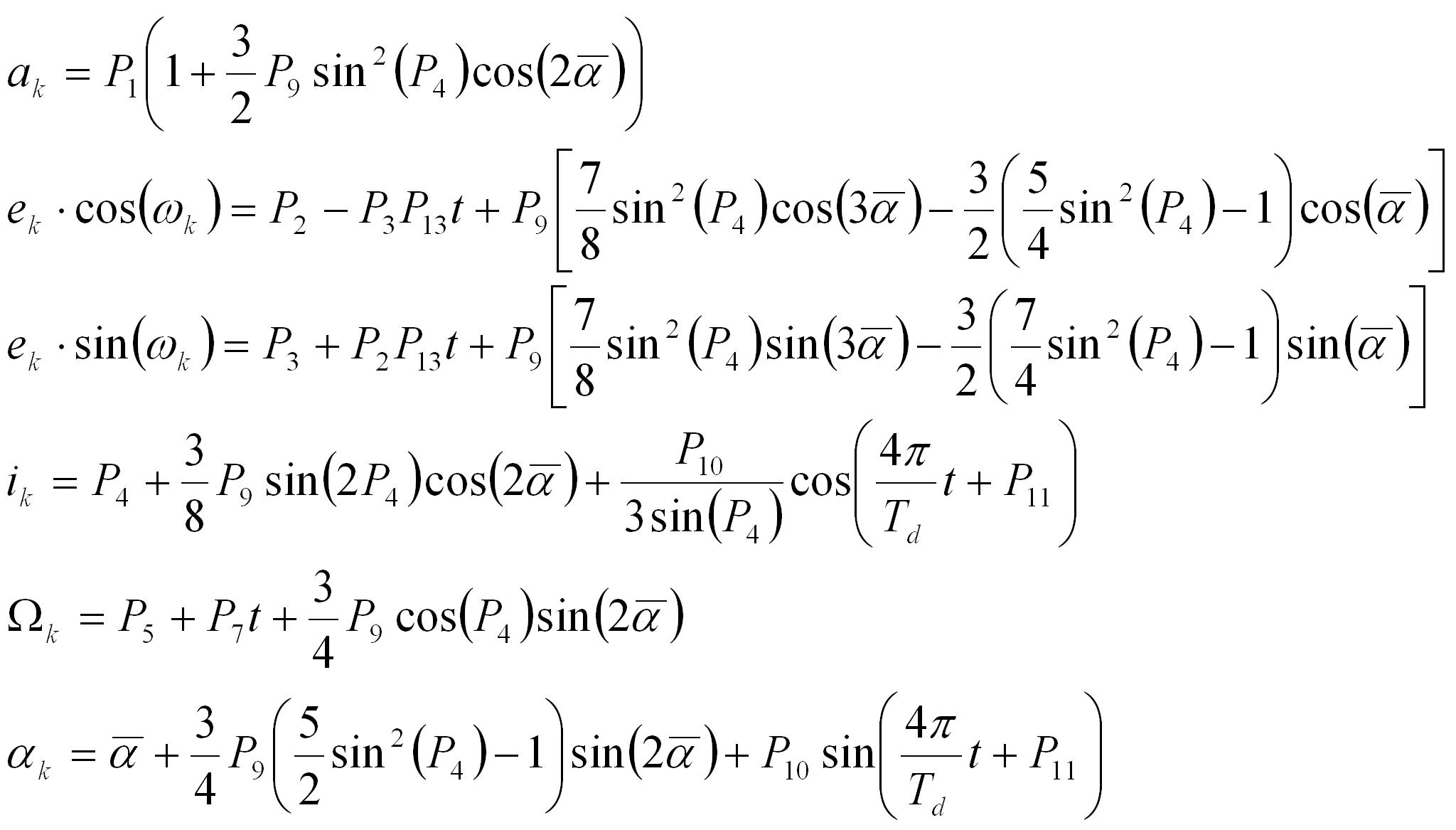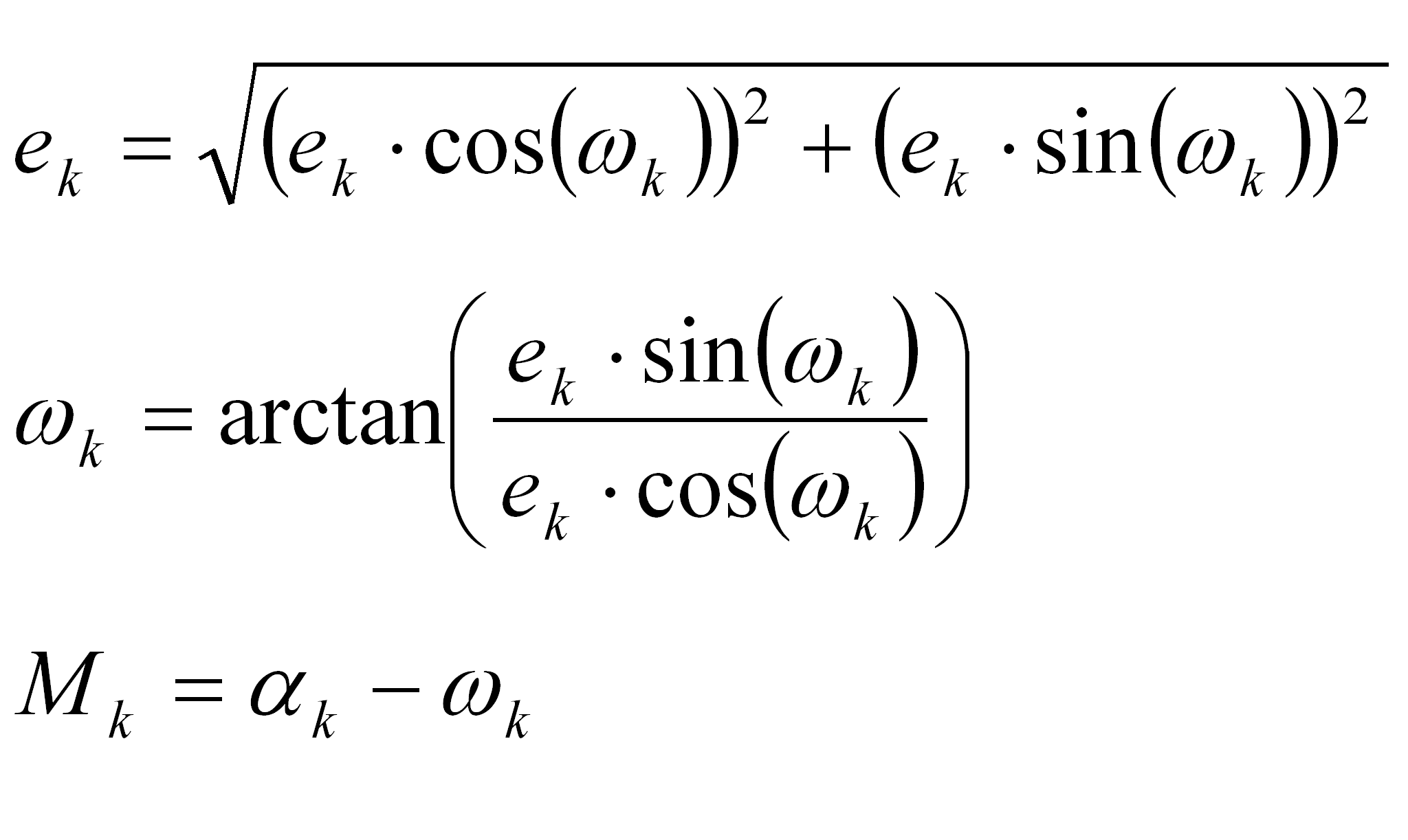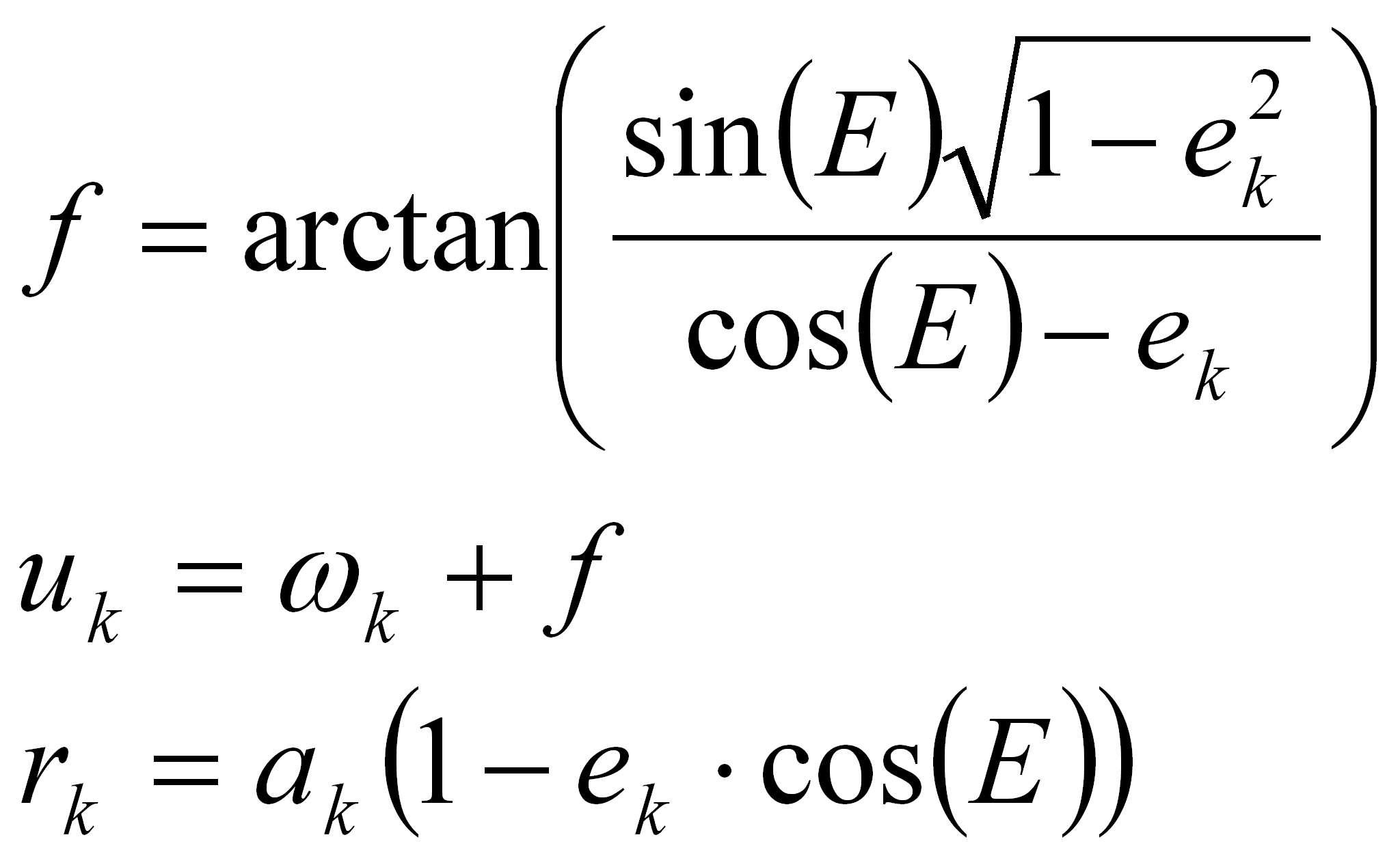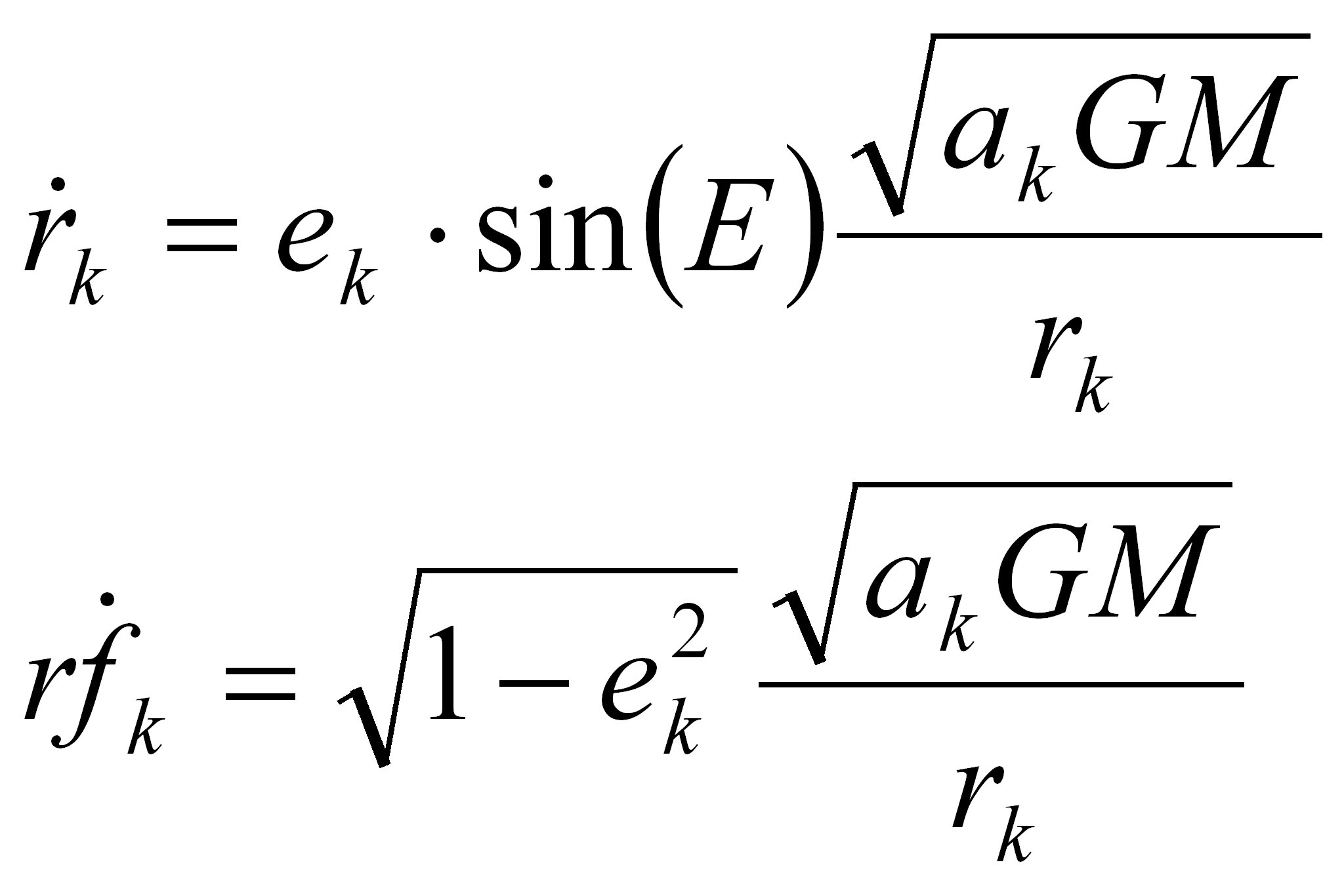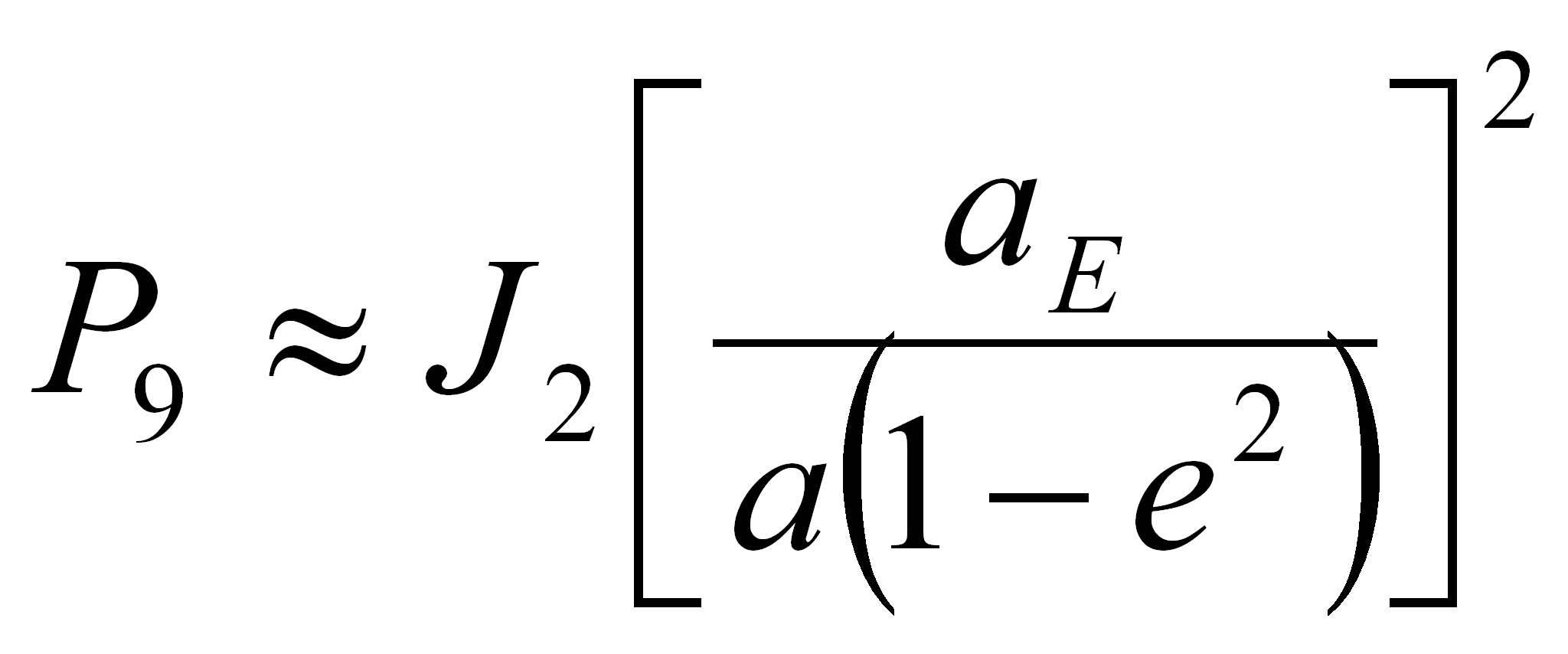
Where a is the semi-major axis, aE is the Earth radius, and J2 the zonal gravity constant of 1.08263e-003 (in the above example, this equation yields 0.0008506078 rather than the solved-for value of 0.000849)
The "SPOT model" is an analytic (General Perturbation) model of the motion of a satellite, intended for use over short periods of time (day or two) with near circular low-Earth orbits. It was originally developed for use with the SPOT satellite (Satellite Pour l'Observation de la Terre) as a fast approximation for on-board use, etc.
Unlike the 'classic' GP models, where the ephemeris consist of the epoch and the Keplarian set (plus drag terms sometimes), the SPOT model has the epoch and 13 fitted parameters (6 essentially classical and 7 perturbation terms) that allow higher short-term accuracy.
It
was
adopted for the METOP series of satellites as offering higher
accuracy than some more general analytic models (e.g. SGP4,
Brower-Lyddane) but without the huge CPU load of a numerical
integrator (Special Perturbation) model. The study concluded the
error for a 12 hours period was of the order of 0.172km RMS, and
METOP carries sets of elements for 0-12h, 12-24h and 24-36h
periods.
[top of page]
When using the data from METOP, the main problem is the unannounced change of units, for example, the Eumetsat document EPS/GGS/TN/980021 Issue 2, Rev. 0, 03 October 2003 "Metop Administration Message Technical Note" is wrong, it gives the equations in Annex 3 and in this case it is clearly stated that times is in seconds. Also the format of the equations imply radian units (e.g. use of P11 parameter in conjunction with a per-day periodicity). Furthermore, the cited document RD-1 EPS/Metop - Technical Note on Orbit Prediction, GMV-EPSFDS-TN-002 clearly states the units to be radians and seconds (Table 4-8, page 40).
We
now
know that the units of the message are degrees and days!
The 13 fitted parameters for METOP-A at Tue Feb 06 01:00:00.000
2007 are:
|
Term |
Example Value |
Units |
Approximate physical interpretation |
|
1 |
7195.643693 |
km |
Semi-major axis |
|
2 |
-5.9e-005 |
- |
Eccentricity and cos(argument of perigee) at epoch. |
|
3 |
0.00117 |
- |
Eccentricity and sin(argument of perigee) at epoch. |
|
4 |
98.762653 |
degrees |
Inclination |
|
5 |
98.319158 |
degrees |
Right Ascension of Ascending Node at epoch. |
|
6 |
246.173671 |
degrees |
Mean argument of latitude at epoch. |
|
7 |
0.988393 |
degrees/day |
Rate of change of RAAN, should average around 360/365.25 = 0.9856 deg/day for a sun-synchronous orbit. |
|
8 |
5114.436329 |
degrees/day |
Rate of change of argument of latitude (i.e. mean motion) |
|
9 |
0.000849 |
- |
Fudge factor based on zonal gravitational potential term (see below). |
|
10 |
-0.003888 |
degrees |
'Amplitude' of J2,2 tesseral gravity perturbation. |
|
11 |
250.510794 |
degrees |
'Phase' of J2,2 tesseral gravity perturbation. |
|
12 |
0.022983 |
degrees/day2 |
Drag term (quadratic in mean motion). |
|
13 |
-0.048474 |
1/day |
Similar to the rate of change of argument of perigee (in radian/day), but also of eccentricity and really just a solved-for fudge factor. |
NOTES:
1) METOP is intended to maintain a 'frozen' orbit when
operational, with the argument of perigee staying around the 90°
value.
2) The osculating value of argument of perigee
changes significantly due to perturbations on low eccentricity
orbits, this is different to the mean perigee.
3) The P9 fudge factor is
approximately given by:

Where a is the
semi-major axis, aE is the Earth radius, and J2
the zonal gravity constant of 1.08263e-003 (in the above example,
this equation yields 0.0008506078 rather than the solved-for value
of 0.000849)
4) Unlike the NOAA satellites, it is expected
that METOP will perform occasional orbit correction manoeuvres,
thus rendering prior ephemeris invalid.
The model itself is defined by the following equations, working with t (time since epoch), first compute the 'mean' mean argument latitude (without the short term gravitational perturbations) from:

Then compute the following osculating parameters:
